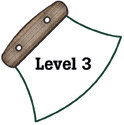
Alaska Science
Key Element C4
A student who meets the content standard should understand that some personal and societal beliefs accept non-scientific methods for validating knowledge.
 |
Alaska Science A student who meets the content standard should understand that some personal and societal beliefs accept non-scientific methods for validating knowledge. |
|
Performance Standard Level 3, Ages 11–14
|
|
|
|
Sample Assessment Ideas
|
Standards Cross-References
|
||
|
National Science Education Standards Recognize and analyze alternative explanations and predictions. Students should develop the ability to listen to and respect the explanations proposed by other students. They should remain open to and acknowledge different ideas and explanations, be able to accept the skepticism of others, and consider alternative explanations. (Page 148) Scientific explanations emphasize evidence, have logically consistent arguments, and use scientific principles, models, and theories. The scientific community accepts and uses such explanations until displaced by better scientific ones. When such displacement occurs, science advances. (Page 148) Science cannot answer all questions and technology cannot solve all human problems or meet all human needs. Students should understand the difference between scientific and other questions. They should appreciate what science and technology can reasonably contribute to society and what they cannot do. For example, new technologies often will decrease some risks and increase others. (Page 169) Scientists formulate and test their explanations of nature using observation, experiments, and theoretical and mathematical models. Although all scientific ideas are tentative and subject to change and improvement in principle, for most major ideas in science, there is much experimental and observational confirmation. Those ideas are not likely to change greatly in the future. Scientists do and have changed their ideas about nature when they encounter new experimental evidence that does not match their existing explanations. (Page 171) In areas where active research is being pursued and in which there is not a great deal of experimental or observational evidence and understanding, it is normal for scientists to differ with one another about the interpretation of the evidence or theory being considered. Different scientists might publish conflicting experimental results or might draw different conclusions from the same data. Ideally, scientists acknowledge such conflict and work toward finding evidence that will resolve their disagreement. (Page 171) Tracing the history of science can show how difficult it was for scientific innovators to break through the accepted ideas of their time to reach the conclusions that we currently take for granted. (Page 171) |
Benchmarks Some matters cannot be examined usefully in a scientific way. Among them are matters that by their nature cannot be tested objectively and those that are essentially matters of morality. Science can sometimes be used to inform ethical decisions by identifying the likely consequences of particular actions but cannot be used to establish that some action is either moral or immoral. (Page 7) |
|
Table of Contents | Return to Alaska Native Knowledge Network